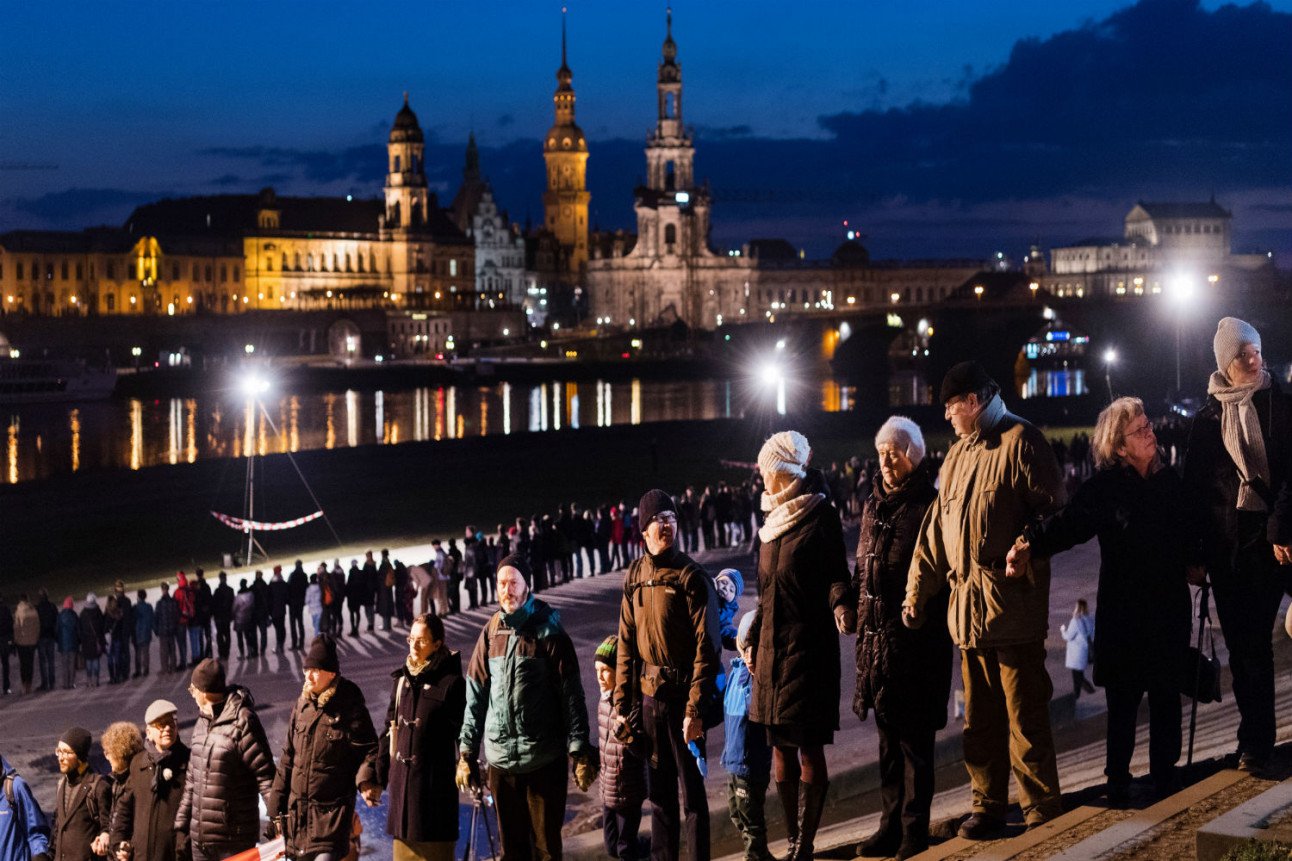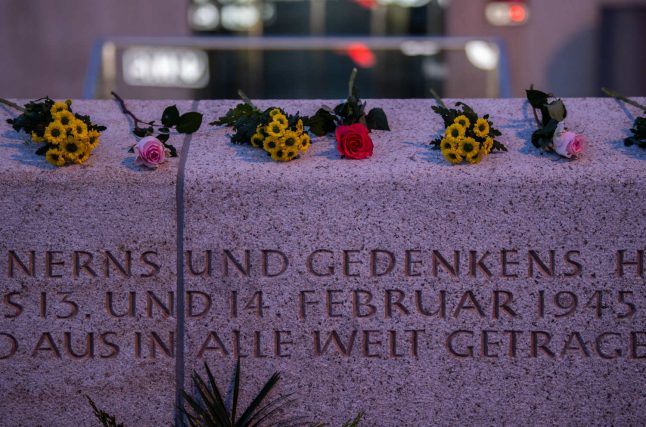Hundreds of German bombers rained fire on the central English city over 11 hours on the night of November 14, 1940, targeting aircraft and munitions factories vital to Britain's war effort.
READ ALSO: Germany remembers 75 years since Dresden's destruction
More than 550 people were killed, over 41,000 homes destroyed and about two-thirds of the city's buildings were damaged, in one of the Luftwaffe's most devastating targeted raids.
The cathedral church of St Michael's was one of many historic buildings razed by Nazi incendiary bombs.
Its ruined shell still stands today — a potent symbol of remembrance and the destructive power of war.
Next to it is the new cathedral, also called St Michael's, where a cross made from three nails from the roof of the old medieval church forms the centrepiece of the high altar.
Commemoration in Dresden
Dresden will be uppermost in Coventry's thoughts on Thursday when Germany marks 75 years since the destruction of the city, said the Dean of Coventry Cathedral, John Witcombe.
In Dresden, a human chain will form in the late afternoon on both sides of the Elbe to commemorate victims of the air raid. Participants will be joined by German president Frank-Walter Steinmeier and Duke of Kent, Prince Edward.
The Bishop of Coventry, Christopher Cocksworth, will also be in Dresden. Back home, candles will be lit and prayers said at evensong in solidarity.

The annual human chain in Dresden in 2018. Photo: DPA
Witcombe said it was vital to leave a legacy of peace and understanding about what happened, as World War II passes out of living memory.
“I see it as our job to keep that story alive but in a way that uses this as a springboard for the work of reconciliation together,” he told AFP.
'Heal the wounds of history'
Building bridges first began in the aftermath of the war, when delegations from Coventry began visiting cities in Germany and across Europe that had suffered a similar fate.
Coventry's links with Dresden became closer from the 1960s, first in terms of practical help, then as part of a wider international group promoting peace in conflict zones around the world.
The cathedral's Community of the Cross of Nails now has more than 200 international partners, including churches, charities and education centres, in 45 countries.
One of its main principles is to “heal the wounds of history”.
Outreach work continues and has even been stepped up before and after Britain left the European Union and after recent terror attacks.
Witcombe said replica crosses of nails have recently been delivered to Southwark Cathedral, in south London, after two attacks on nearby London Bridge last November and in 2017.
Others have gone to the main Anglican church in Belgium, the Holy Trinity in Brussels, and to Bergen, Norway. Three German churches are joining the community later this year.
Witcombe said there has “never been a time” when peace and reconciliation was not relevant but the divisive issue of Brexit and extremism had brought the concept into sharp relief.
“As relationships are moving forward in ways that might seem to suggest that a distance is growing or certainly relationships need to be reconfigured, I think maintaining close commitments to one another and partnerships is incredibly important,” he said.
“We're still finding that people are looking to us for inspiration around reconciliation.”



 Please whitelist us to continue reading.
Please whitelist us to continue reading.
Member comments